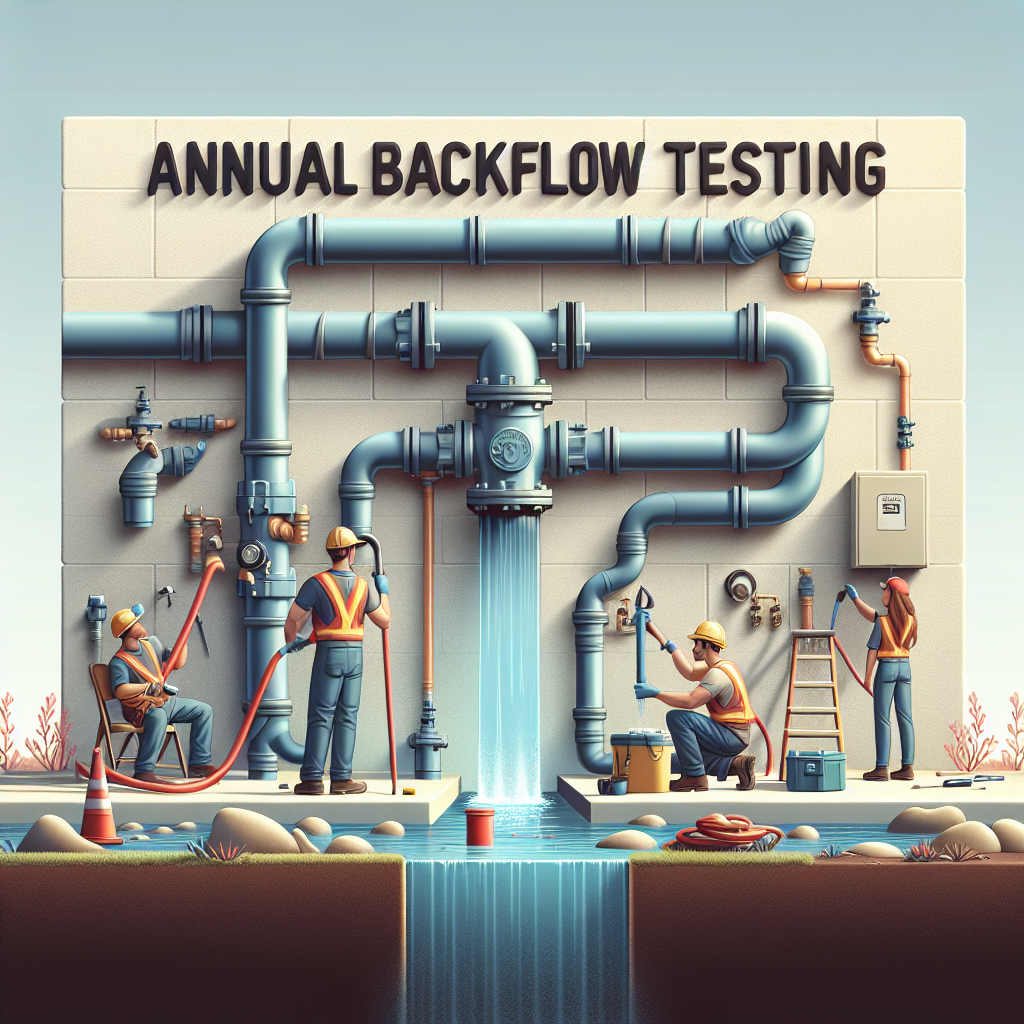Backflow testing is an essential yet often overlooked aspect of maintaining a safe and healthy water supply. Many homeowners and business owners may be unaware of the potential hazards posed by backflow, making education on this topic crucial. This article will delve into the importance of annual backflow testing, the risks involved, and what you need to know to keep your water supply safe.
What is Backflow and Why Does it Happen?
Before discussing the testing itself, it’s vital to understand what backflow is. Backflow occurs when water flows in the opposite direction from its intended path. This can lead to contaminated water supplies, posing significant risks to human health. Typically, backflow happens due to changes in water pressure, which can arise from various factors, such as:
- Main line breaks: A sudden rupture can create a vacuum that pulls contaminated water back into the clean water line.
- Increased water demand: Heavy usage in nearby areas (like firefighting) can cause pressure drops, leading to backflow.
- Cross-connections: Improperly installed plumbing systems can create direct links between clean and contaminated water sources.
The Dangers of Backflow Contamination
The implications of backflow can be severe. Contaminated water can contain harmful bacteria, chemicals, and pollutants that can enter your water supply. According to the Centers for Disease Control and Prevention (CDC), drinking contaminated water can lead to serious illnesses, including gastrointestinal disorders, neurological issues, and even long-term health problems.
Moreover, backflow can jeopardize public health and safety, creating the potential for large-scale health crises. This makes regular testing and maintenance crucial, both for your safety and for the wellbeing of your community.
Why Annual Backflow Testing is Essential
1. Compliance with Regulations
Most municipalities require periodic backflow testing to comply with local regulations. These laws are in place not only to protect individual property owners but also to ensure that the entire water supply system remains uncontaminated. Failing to adhere to these regulations can lead to hefty fines, or worse, the disconnection of your water supply.
2. Early Detection of Issues
Annual backflow testing allows for the early identification of potential problems in your plumbing system. Certified professionals use specialized equipment to assess the condition of your backflow prevention devices and plumbing connections. This proactive approach can save you money and prevent contamination before it occurs.
3. Peace of Mind for Homeowners and Businesses
Knowing that your water supply is safe fosters peace of mind. Regular testing reassures homeowners and business owners that they are taking the necessary measures to protect their families and customers. This commitment to safety builds trust and reputation within the community.
How Backflow Testing Works
Backflow testing typically involves a certified technician evaluating your backflow prevention devices, including double-check valves and air gaps, to ensure they operate correctly. The process includes:
- Shutting off the water supply: To perform accurate tests without outside interferences.
- Inspecting valves: Technicians check for any signs of wear or malfunction.
- Conducting pressure tests: Using specialized tools, the technician tests the pressure within the backflow system to ensure it meets safety standards.
- Documenting results: Any issues found will be documented, and follow-up actions will be suggested.
These steps not only ensure the current functionality of your system but also help predict future maintenance needs.
Choosing a Qualified Technician
It’s essential to have your backflow testing performed by a certified and experienced technician who adheres to local regulations. When selecting a service provider, consider the following:
- Licensing and certification: Ensure the technician has the appropriate credentials.
- Experience and reputation: Look for reviews and testimonials from past clients.
- Service offerings: A full-service provider can offer ongoing maintenance and inspections.
What to Expect After Testing
Once testing is completed, you’ll receive a report detailing the condition of your backflow prevention devices. If any issues are identified, the report will typically recommend necessary repairs or replacements. Addressing these problems swiftly is vital for maintaining a safe water supply.
Conclusion: Prioritize Your Water Safety
In summary, annual backflow testing is not just a regulatory requirement; it’s a critical practice for ensuring the safety and quality of your water supply. By understanding and addressing the risks associated with backflow, you can protect not only your home or business but also your community. Make it a priority to schedule your annual testing and choose a qualified technician to help keep your water safe and clean. Remember, prevention is always better than cure—your health and safety depend on it.


